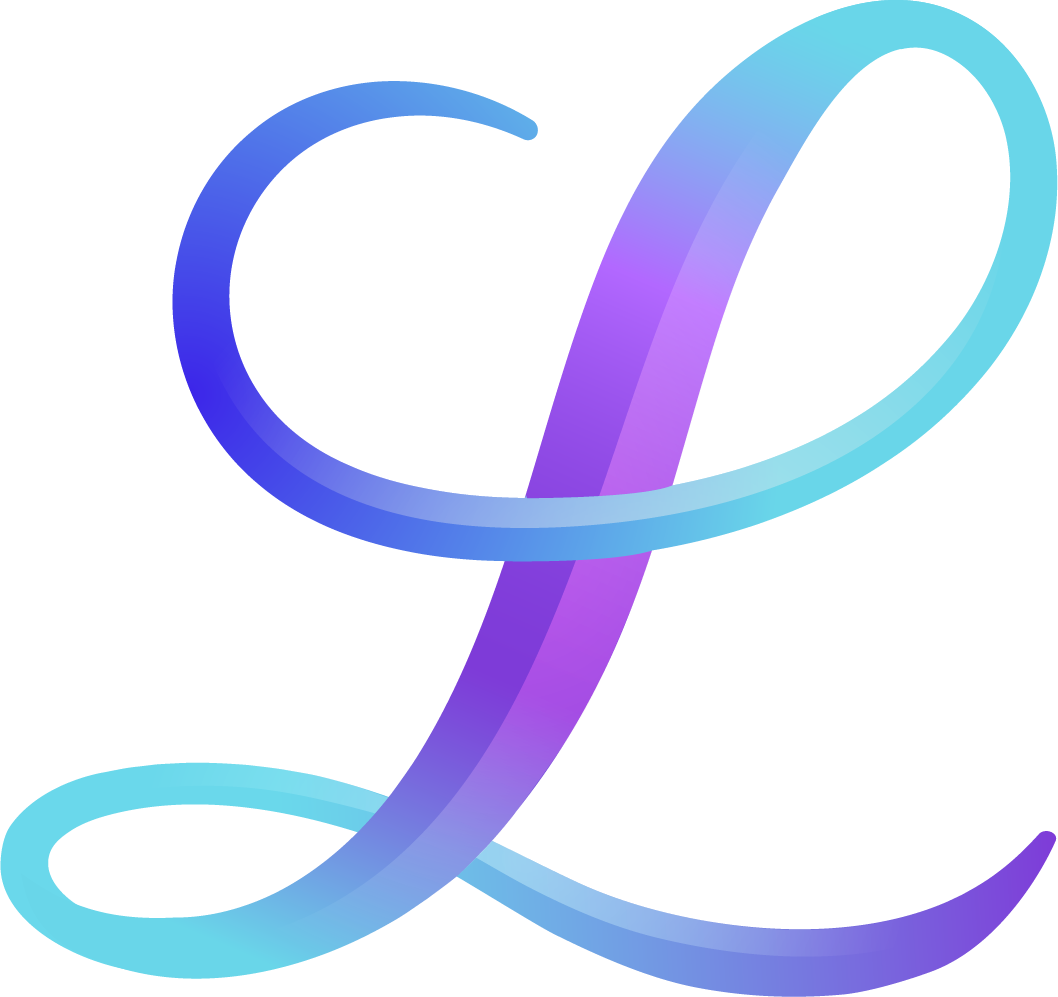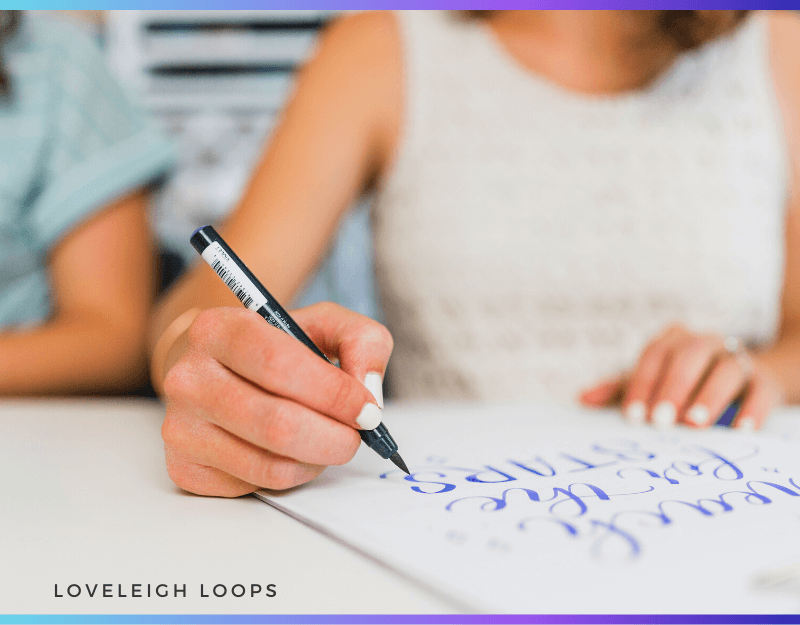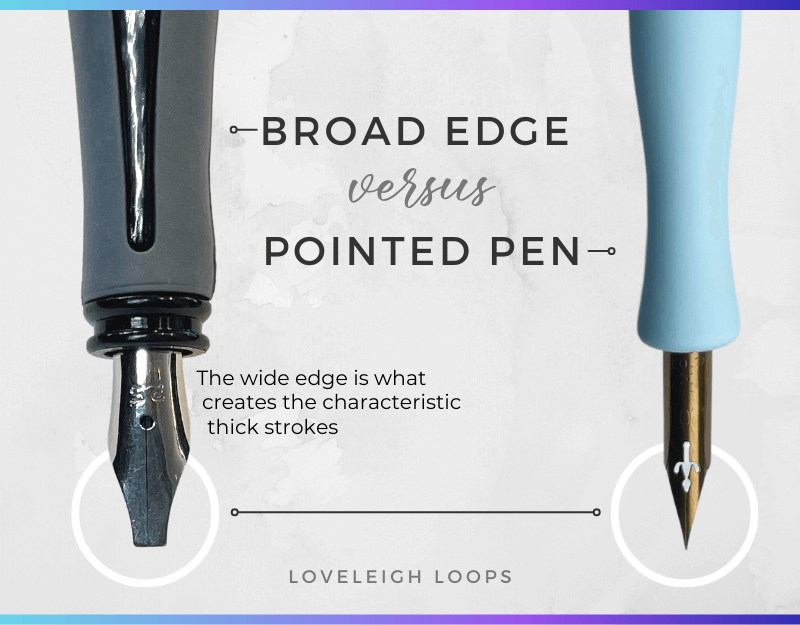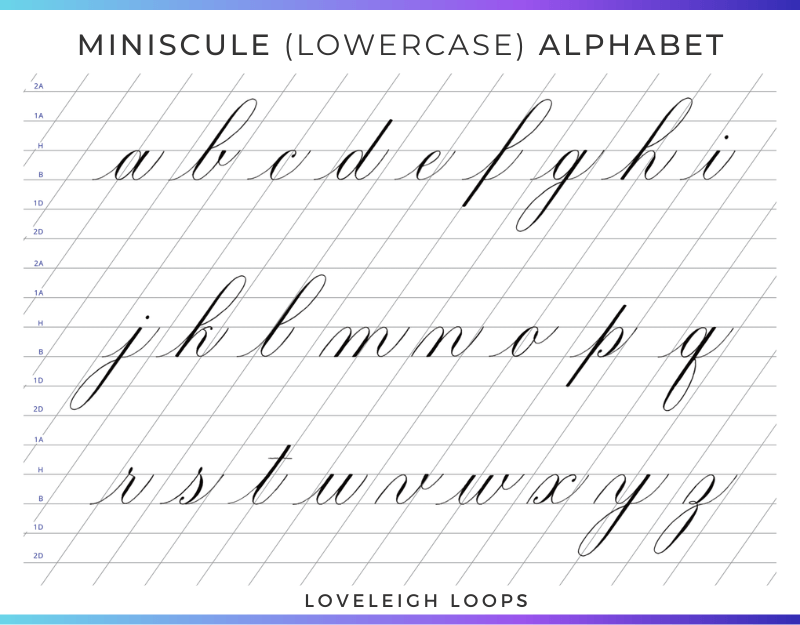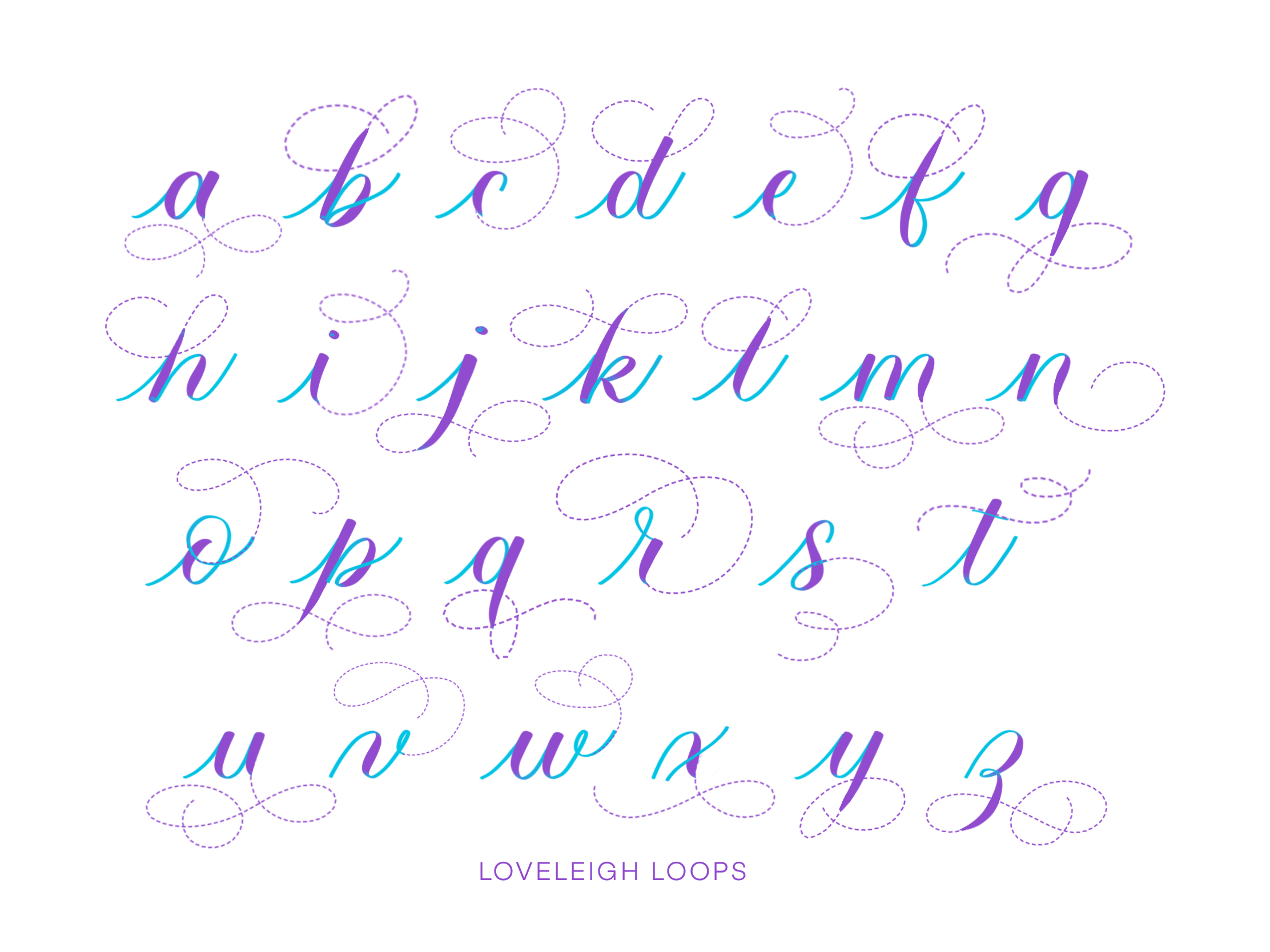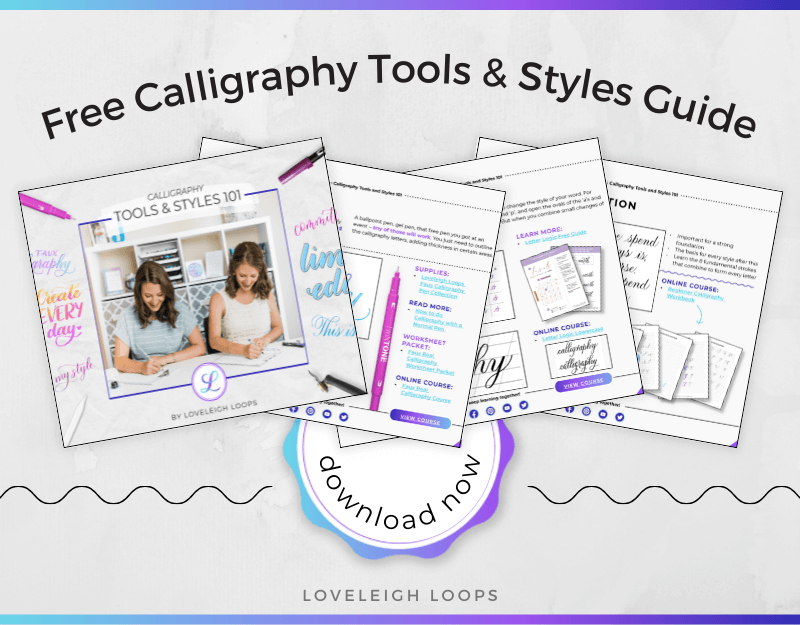Calligraphy Comparison Guide: Tools & Styles 101
When you hear the word calligraphy, what comes to mind? You might think of traditional, fancy scripts used for weddings or historical documents. Or you might associate calligraphy with cursive.
But you may not realize just how many calligraphy styles and tools there are! When creating lettering projects, you're only limited by your creativity and practice.
And since calligraphy has changed a lot over the years, it might encompass more than you think!
Pin it for later! ↓
Today, we use the word calligraphy to talk about a wide range of decorative lettering styles, from faux calligraphy to pointed pen to digital lettering.
Here at Loveleigh Loops, we’ve been doing calligraphy for many years and have taught 40,000 calligraphy students all over the world. We’re going to walk you through popular calligraphy styles and which tools you use to create them.
We’re Jordan (left) and Jillian (right) and we’re SO glad that you’re here with use today
Whether you're new to lettering or you're ready to take the next step in your journey, it's helpful to know exactly what each style looks like and what tools you'll need so you can get started on the right foot. We'll start by comparing the tools used to create calligraphy, then we'll talk about the lettering styles that can be created.
Table of Contents
Part 1: Calligraphy Tools
There are different types of calligraphy styles that use specific tools, such as brush calligraphy which is created with a paintbrush or a flexible marker-like pen, and pointed pen calligraphy, which is when a steel nib is dipped into ink. Alternatively, you can use any pen or pencil that has a consistent weight to create faux calligraphy.
Take some time to research what you need before getting started so you'll have everything at your fingertips.
Browse our favorite calligraphy supplies here.
Monoline Pens
Faux calligraphy involves drawing the letters to make them look like calligraphy without needing any fancy pens or pencils. It's a great way to use the pens that you already have, such as highlighters, fine liners, ballpoint pens, markers, or colored pencils.
You'll just need a writing tool that creates a consistent weight, meaning that no matter how hard you press down on it, the line it creates stays the same with the same width. It's a really good way to learn some of the initial shapes that create the letters.
Our free course on how to get started with faux calligraphy is the most popular way our students get started with calligraphy. Over 7,000 people have gone through the course and you can, too!
Brush Pens
Brush lettering is increasingly popular, and it requires special pens with a flexible tip that come in a range of pen tip thicknesses (you can see our comparison guide here), with different pens having a different effect on the project outcome.
Jillian doing brush lettering with a brush pen
You will need high-quality paper to avoid bleeding and to keep the strokes smooth.
Pointed Pens
Pointed pen calligraphy uses special pointy nibs and ink to write with, creating an elegant, almost old-fashioned look. We usually don't recommend this style of calligraphy for beginners of the art because you have to think about how to form the letters and control the ink at the same time (it's easier if you learn the letters first in faux calligraphy).
Jordan writing Copperplate calligraphy with a pointed pen
Finished projects are beautiful and elegant and you'll see this lettering on things like wedding invitations and place cards. Just make sure to give the ink plenty of time to dry to avoid smudging.
Broad Edge Pens
Broad edge pens give your calligraphy and hand lettering projects a nice contrast, with both thin and very thick lines. The width of each line is dependent on the direction of the nib compared to the direction of the stroke. These pens are NOT flexible like brush pens and pointed pens, so you don't have to apply pressure, you just have to keep the nib angle consistent. You can find broad edge pens that are like markers or broad edge nibs that are dipped into ink.
See how a broad edge pen compares to a pointed pen
Certain calligraphy scripts use broad edge pens including Italic and Gothic. Fun fact: Italic was the first calligraphy style we learned at age 11! But we don't currently teach any broad-edge lessons.
Digital Pens (iPad)
Procreate is, by far, the most popular app for digital lettering. We've been using it for years and love the flexibility it gives us in a variety of projects. One of our favorite things about Procreate is that it allows us to create different iterations of the same project--without using up paper or ink. Plus, it's so convenient to simply pack up our iPad and pen when traveling, instead of having to decide which pens to bring along. They're all right there in the iPad!
Calligraphy Tools: Side by Side Comparison
- Ability to write on any sufrace
-The artist determines the width of the strokes; scale the words to fit any size
- Creating consistent stroke widths requires attention to detail
- No mess, easy clean-up
- Works well on paper goods: envelopes, place cards, and framed paper signs
- High quality brush pens can get pricey
- Achieve a professional and elegant look
- You can mix custom ink colors
- Ink needs time to dry completely, can be messy
Part 2: Lettering Styles
Getting started with calligraphy can seem overwhelming. There are so many choices to make, so many styles, so many iPad tricks to master, the list goes on and on!
Given the popularity of calligraphy worldwide, this is not surprising.
Global Art Form
Calligraphy has been practiced all around the world. And as a result, there are as many types of calligraphy as there are alphabets in the world.
From western calligraphy to Arabic calligraphy and Islamic calligraphy in the Middle East to the characters in eastern calligraphy, the art of beautiful handwriting is still popular with calligraphers worldwide.
A Long History
Calligraphy is an ancient art form that's as old as writing itself. People from all over the world have been practicing their basic strokes and calligraphy skills for centuries to create letters and beautiful works of art.
In western calligraphy alone, the art goes to people in ancient Rome working on italic hand and medieval monks working on their gothic hand.
Many calligraphy styles come with unique tools of the trade. While the quills of old have gone largely out of practice, the tools of other traditional scripts such as the broad edged pen of blackletter calligraphy or the dip pen of Copperplate script or Spencerian continue to be popular with modern calligraphers today.
While it may not be a mainstream practice anymore, calligraphy is still everywhere in popular culture. Instagram and Pinterest are covered in gorgeous lettering compositions. Calligraphy fonts remain a popular installation on computers.
Speaking of social media, do you want calligraphy tips 3x a week? Follow us online!
Calligraphy fonts are useful for people who aren't interested in learning calligraphy for themselves, but we hope that you've been inspired to pick up a pen and create for yourself!
Mid-13th century Islamsic calligraphy from the Alhambra
Calligraphy Alphabets
After you learn the basic way to write calligraphy letters, you have the fun journey of choosing one of the many different types of calligraphy. For the Latin alphabet alone, both modern and traditional calligraphy, there are so many calligraphy alphabets and styles to choose from! The following styles are just a sample of the options available to you.
Traditional Calligraphy: Copperplate Script
Named after the copper plates used by printers in the 18th century, this beautiful lettering style is known for its elegant letters and its contrast between thick and thin lines.
In the Copperplate script, letters are made with a combination of thin strokes for upstrokes and thick lines for downstrokes. Learning how to control the dip pen is an important part of your initial learning curve.
While lowercase letters look fairly simple, uppercase letters are often a beautiful example of the elegance found in traditional scripts. Every uppercase and lowercase letter is written at the same slant and consistency is an important characteristic in this lettering style.
You may also like: 60 Calligraphy Alphabet Examples
Modern Calligraphy: Bounce Lettering
A fun modern calligraphy style, bounce lettering is a fun style of hand lettering where the letters include embellishments that make it appear as if the letters are bouncing from one to the next--or even off the page!
It looks flowy and effortless, but if you've ever tried it, you’ll know it's a little harder than it looks. You'll need to know some mechanics of hand lettering before having a little fun with this style.
Calligraphy Style: Flourishing
You get to have some fun with flourishing lettering! It's another form of embellishing that allows you to turn lettering projects into fancy and decorative works of art.
How elegant do these variations of the lowercase alphabet look?!
While it may seem effortless when other people do it, flourishing can be challenging when you're first starting out. Here are some tips if you want to use flourishing in your lettering:
Sans-Serif Capital Letters
There's a lot you can do with capital letters to make them a little more fun, which is why we created a free course to show you!
Whether you're using serif or sans serif, varying proportions or changing up the straight and diagonal lines, your capital letters don't have to look like your traditional letter chart from first grade.
Designing Your Own Alphabets
While the different styles found here, on Instagram, Pinterest or in lettering books are certainly inspirational, we also have to mention the fun that comes with designing your own alphabets! There is no one style that fits all when it comes to calligraphy.
If you want to see more styles and be inspired by the alphabets that some of our students came up with, then check out our blog post on Calligraphy alphabets. You won't be disappointed!
Calligraphy Alphabets and Letter Variations
Once you're really comfortable with the fundamentals of hand lettering, you can start to add your own letter variations to make it your own. This allows you to create your own word styles and even develop your very own font that you can use again and again.
Download the Guide
Enter your email address below to download our free Calligraphy Tools & Styles 101 Guide PDF. You’ll also receive more calligraphy resources in our newsletter. Unsubscribe any time.
